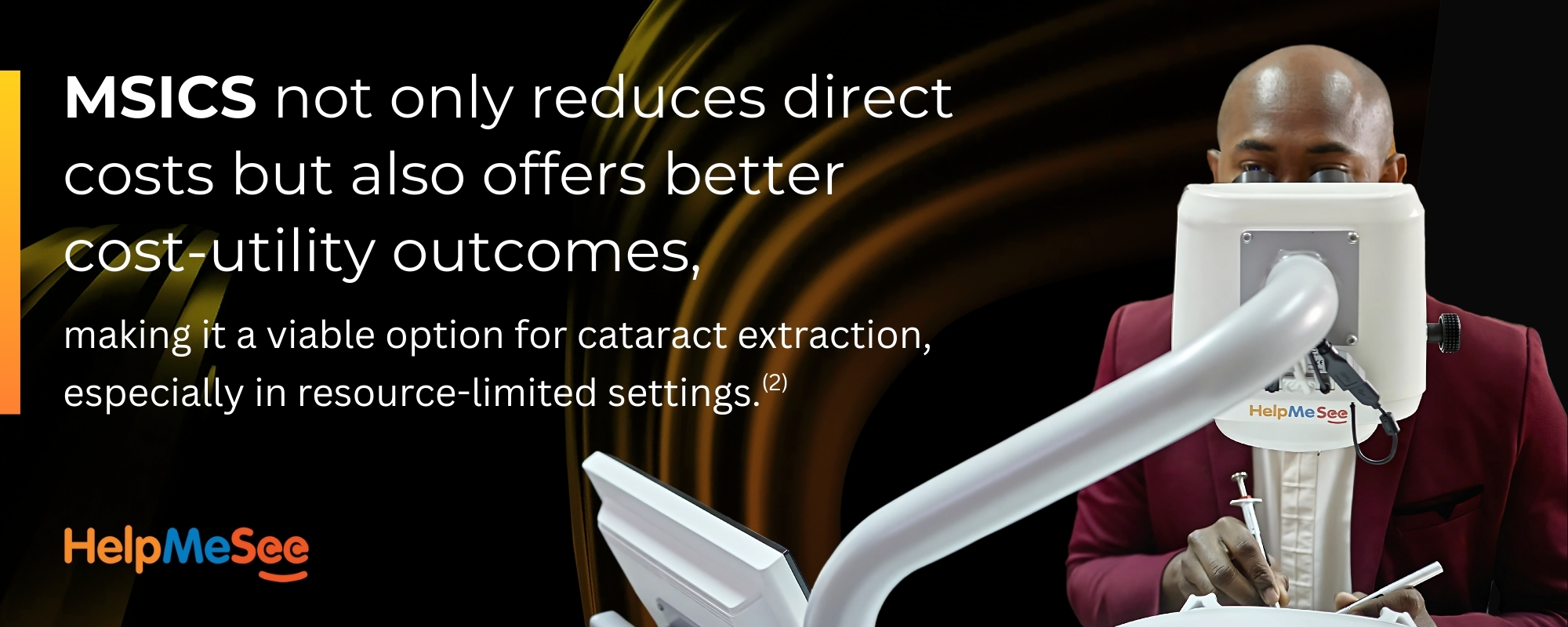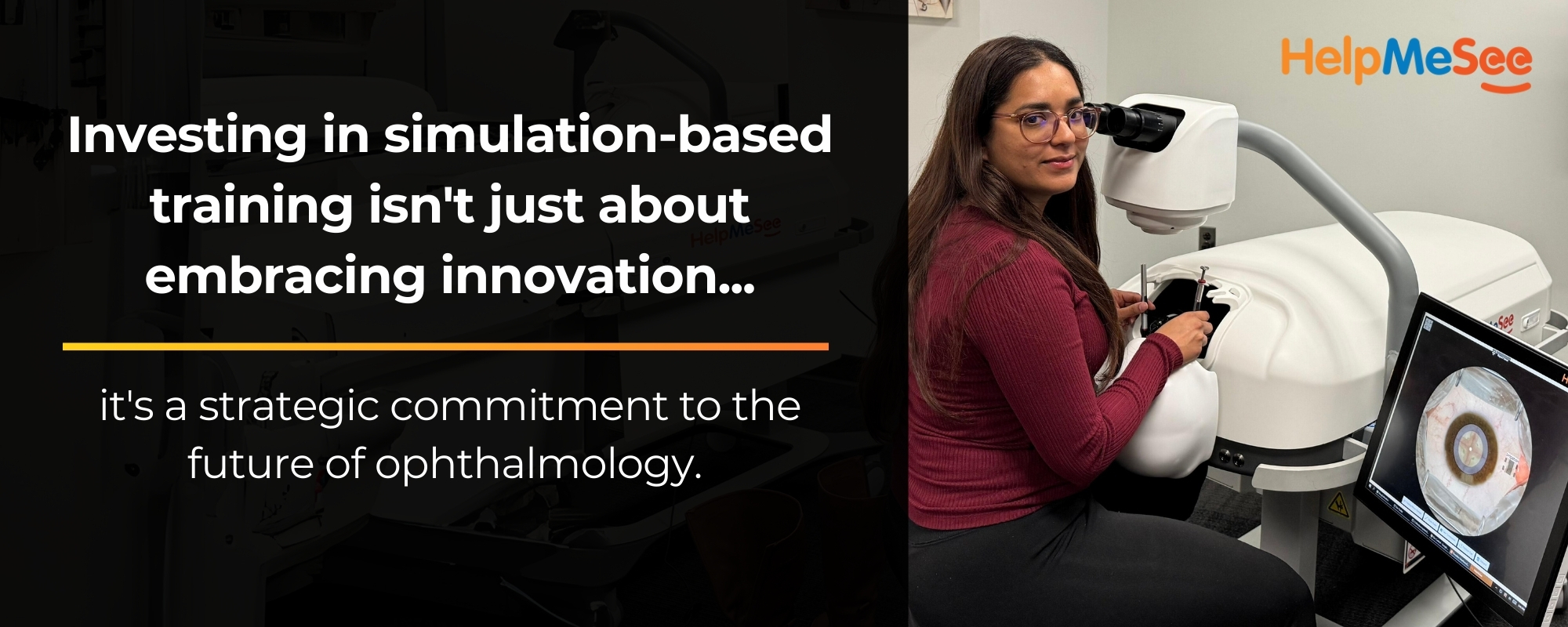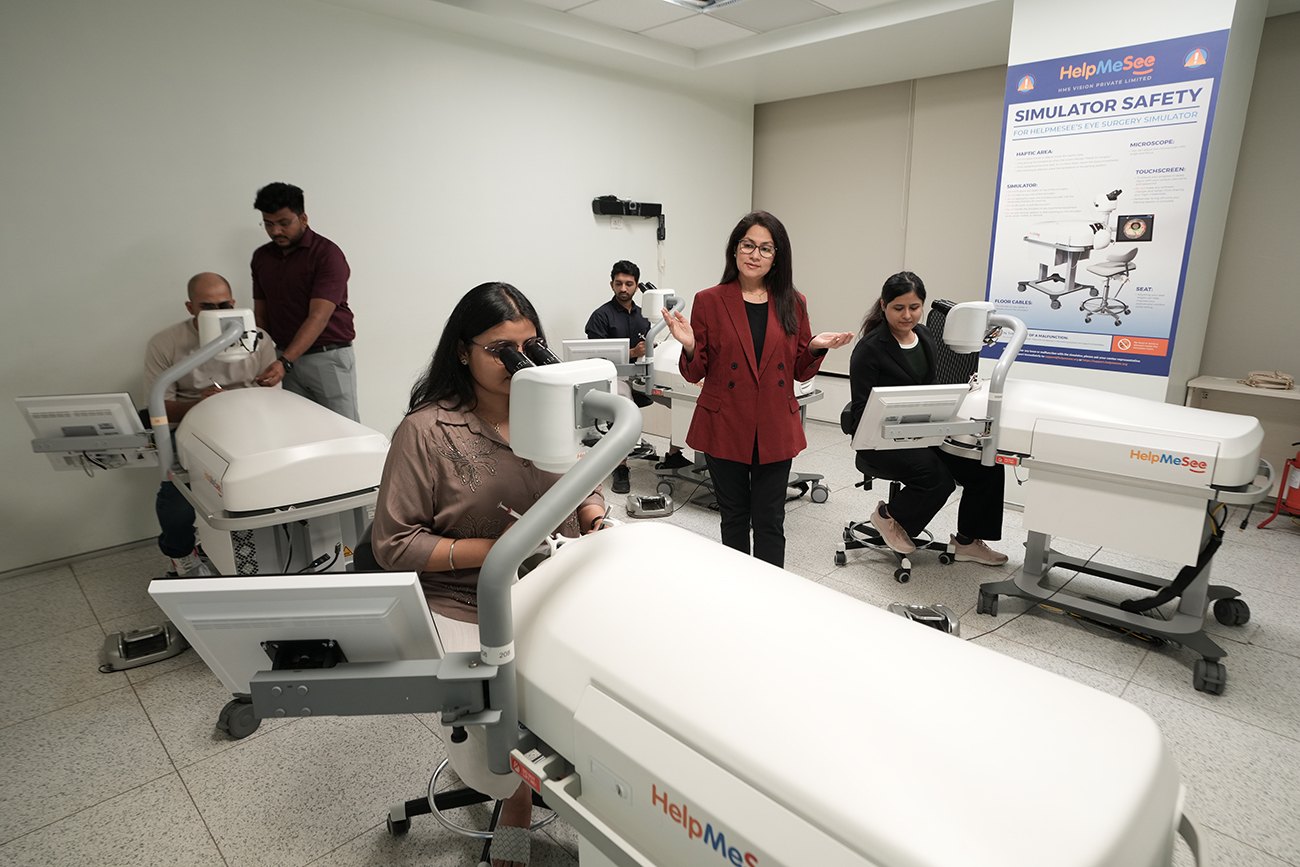The landscape of ophthalmic surgical training is evolving, and the role of simulation-based training has never been more critical. As the global burden of cataract-related blindness grows, so does the demand for well-trained cataract specialists. Investing in simulation-based training technology is not just a step toward innovation—it is a strategic move that leads to cost savings, increased surgical skills competency, and a stronger return on investment for ophthalmology training programs.
Cutting Costs and Improving Care: A Win-Win
Simulation-based training presents a compelling case for cost savings in healthcare systems worldwide. Traditional apprenticeship models in ophthalmology often result in high expenditures due to longer surgical case times, increased complication rates, and the need for a supervising surgeon. With simulation-based training, resident cataract specialists can practice surgical steps repeatedly in a risk-free environment and develop a higher surgical skill level before they step into an operating room.
A study evaluating the cost-effectiveness of virtual reality (VR) and wet laboratory cataract surgery simulations found that trainees who received additional VR simulation training achieved higher surgical competency scores compared to those who only had wet laboratory training or no simulation at all. The study reported incremental cost-effectiveness ratios (ICER) per competency score gained, indicating that while there are upfront costs associated with VR simulation, the investment is justified by the significant improvement in surgical skills. (1)

Similarly, research focusing on manual small-incision cataract surgery (MSICS) demonstrated that simulation-based training is more cost-effective compared to traditional training methods. The study highlighted that MSICS not only reduces direct costs but also offers better cost-utility outcomes, making it a viable option for cataract extraction, especially in resource-limited settings. (2)
These findings underscore that improved surgical outcomes, facilitated by simulation-based training, lead to reduced patient complications, which in turn translate into lower overall healthcare costs.
A Smart Investment for Training Programs
For ophthalmology residency programs, adopting simulation-based training with an immersive, instructor-led curriculum offers a strong return on investment. Programs that integrate high-fidelity simulation-based training can produce more competent cataract specialists in a shorter time frame.
A validated study on MSICS training using virtual reality developed and confirmed the effectiveness of a structured assessment tool, demonstrating that simulation-based training can reliably measure surgical skills and support proficiency-based progression before transitioning to live surgery (3). Furthermore, high-quality simulators with haptic feedback provide a realistic surgical experience, fostering better skill development in cataract specialists.
It is important to note that simulation-based training with an instructor-led curriculum ensures that cataract specialists develop decision-making abilities in a controlled environment. Complex cases and surgical complications can be simulated and practiced repeatedly, allowing the cataract specialist to develop surgical skills and to properly manage these high-stress situations. This level of preparation significantly enhances surgical confidence, reduces anxiety in the operating room, and improves surgical outcome.

Simulation-based training enhances standardization across residency programs in a few ways. Traditional surgical training can vary depending on surgical volume, surgical case variety, mentorship quality, and institutional resources. By incorporating simulation-based training, residency programs can offer all cataract specialists standardized courses to develop transferable surgical skills before live surgery is begun. Ophthalmology professionals in the Programa de formación basado en simulación HelpMeSee receive a structured, measurable, and objective evaluation of their surgical readiness.
By integrating simulation-based training, residency programs not only improve the quality of education but also foster a new generation of cataract specialists who are more skilled, confident, and prepared to meet the increasing demand for cataract surgeries worldwide.
The Future of Simulation-Based Training in Ophthalmology
As the demand for cataract surgery continues to rise, simulation-based training is positioned to close the gap between transferrable surgical skill development and surgical competency. By investing in innovative simulation-based training, residency programs can partner with organizations like HelpMeSee to create a scalable, efficient solution that enables more cataract specialists to be trained faster, more effectively, and with fewer complications for patients.
Evidence supports that simulation-based training not only improves technical performance but also enhances learning efficiency. A study found that ophthalmology trainees who received virtual reality simulation training for cataract surgery demonstrated significantly improved surgical outcomes, including lower rates of posterior capsule rupture—a key complication in phacoemulsification procedures (4). Another study further confirmed that simulation trained residents showed faster progression and greater surgical independence compared to their traditionally trained peers (5).

By incorporating simulation-based training and embracing new technologies, residency programs can implement scalable and cost-effective training solutions, particularly for manual small-incision cataract surgery (MSICS)—a high-impact technique in resource-limited settings. These simulation platforms provide structured, proficiency-based learning pathways, enabling more cataract specialists to be trained rapidly and effectively, while significantly reducing the risks associated with novice-led surgeries.
Investing in simulation-based training isn’t just about embracing innovation—it’s a strategic commitment to the future of ophthalmology. With proven benefits in surgical safety, educational efficiency, and system-wide cost savings, simulation-based training is no longer an alternative; it is the cornerstone of preparing the next generation of skilled cataract specialists.
(1) Chen, Xiaorong, et al. “Cost-Effectiveness of Virtual Reality and Wet Laboratory Cataract Surgery Simulations in Resident Surgical Training.” Medicine, vol. 102, no. 60, Oct. 2023, e35368. Lippincott Williams & Wilkins, https://doi.org/10.1097/md.0000000000035368.
(2) Khanna, Rohit C., et al. “Health Economics and Manual Small Incision Cataract Surgery (MSICS): An Overview.” Indian Journal of Ophthalmology, vol. 70, no. 11, Nov. 2022, pp. 3927–3931. Wolters Kluwer Medknow Publications, https://doi.org/10.4103/ijo.IJO_1493_22.
(3) Hutter, Daniel E., et al. Desarrollo de un test validado para la evaluación de las competencias MSICS mediante simulación de realidad virtual. Scientific Reports, 2023.
(4) Ferris, James D., et al. “The Impact of Simulation-Based Training on the Learning Curve for Phacoemulsification: A Randomized Controlled Study.” Ophthalmology, vol. 122, no. 5, 2015, pp. 1141–1147. Elsevier, https://pubmed.ncbi.nlm.nih.gov/26210974/.
(5) Nair, Anuradha G., et al. “Effectiveness of Virtual Reality Simulation Training in Phacoemulsification: A Pilot Study.” Indian Journal of Ophthalmology, vol. 64, no. 11, 2016, pp. 878–882. Wolters Kluwer Medknow Publications, https://pubmed.ncbi.nlm.nih.gov/28017423/.
